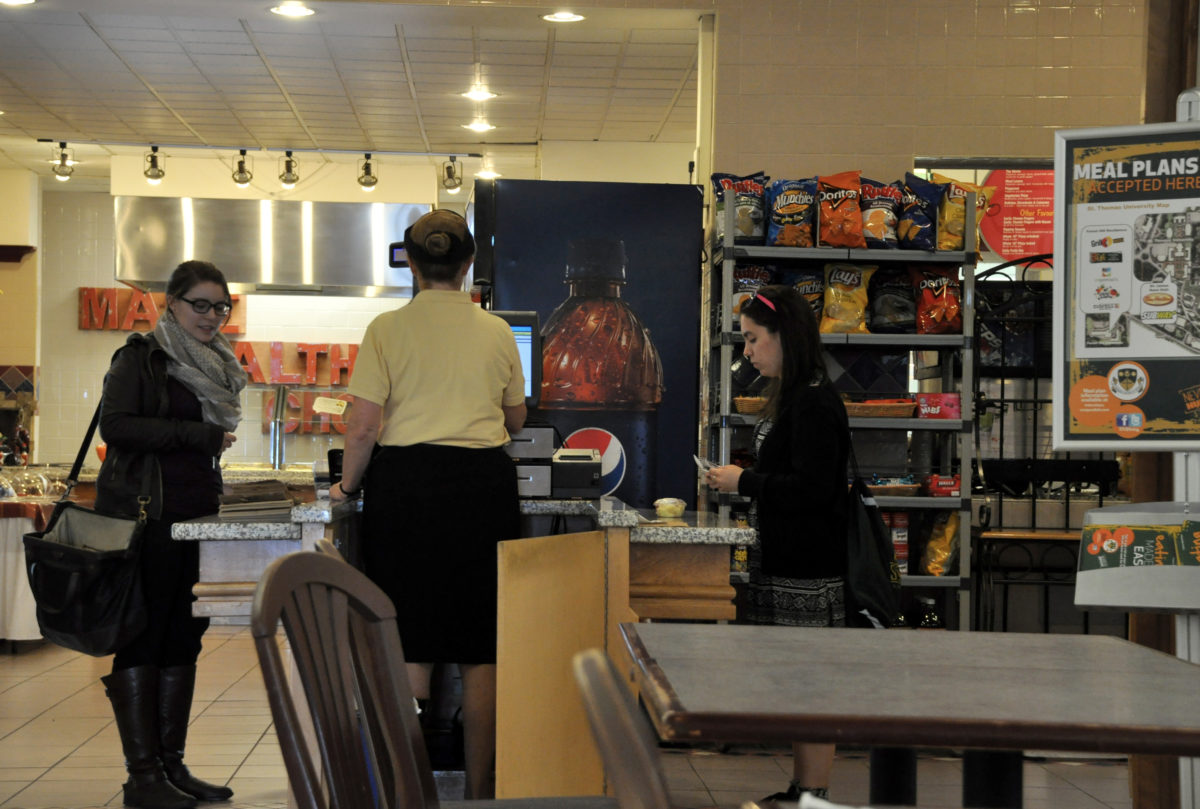
The George Martin Hall cafeteria was in hot water after a routine inspection of the facilities.
On Aug. 28 the cafeteria underwent an inspection and received striped red status, the second lowest status for N.B. food agencies.
The cafeteria had five major health violations at the time.
They were re-inspected on Sept. 4 and the cafeteria moved to the better standing of dark yellow. But the inspectors still had pressing concerns and the cafeteria issued another re-inspection.
The third inspection took place on Sept. 9. The cafeteria passed that inspection and finally recieved green status, which is the best you can get.
Scott MacLean is the central regional director for the department of health. He said the re-inspection was supposed to take place on Sept. 11 but Aramark, the operators of the cafeteria, called the inspectors in sooner.
“The operators had called us and asked us to have the inspection earlier,” MacLean said. “They had corrected all the issues and we were quite pleased by that.”
The cafeteria had a refrigerator that was too warm for food and employees were not recording the temperatures enough during the day.
“There had only been one temperature recording and they’re supposed to do it twice a day,” MacLean said. “It also showed a temperature greater than four degrees Celsius, so they should have taken action to correct it.
“Temperature control is one of the most important aspects of food safety. Time and temperature affect the growth of bacteria and when foods are exposed to danger zone for excessive periods of time the risk of foodborne illness can become real.”
Aramark ensured the inspectors the fridge with the high temperature would be fixed as soon as possible. During the inspection, employees moved the foods inside that fridge to another area for storage.
“There was a risk at the time of inspection but they were taking action to correct it,” MacLean said.
Jeffrey Carleton is the communications officer for STU. He said since the Sept. 4 inspection Aramark has replaced the small fridge with the temperature concerns and made repairs to a walk-in unit.
Carleton said Aramark took this report seriously and fixed the issues right away.
“I think the seriousness Aramark took with this with was the fact that they requested the re-inspection right away,” Carleton said.
He said most of the issues the inspectors had during the first inspection were corrected the same day. The reason why the inspectors were asked to come back earlier was because Aramark thought everything was corrected.
“When you’re in a circumstance like this what you want to do is fix [the issues] as quickly as possible and get [the inspectors] back in to re-inspect. If there’s further issues, again, address those as soon as possible,” Carleton said.
MacLean said the cafeteria has a medium risk status which means it gets inspected twice a year.
The reason why it is medium risk is because it prepares and sells high risk foods, there’s extensive handling of high and medium risk foods, serves more than 250 meals each day and employs over 10 people.
The department of health conducts these inspections.
“We show up unannounced and do our inspection,” MacLean said. “Each inspection is just a snapshot of [the facility at] that particular time.”
Every inspection is evaluated afterwards and a report is posted online. The inspection looks at a variety of different categories including food handling, food storage and cleanliness.
There are five statuses food agencies can receive. From best to worst is: green, light yellow, dark yellow, striped red and red.
The GMH cafeteria normally maintains a green status. MacLean said this was just a “little hiccup” for the cafeteria.
The Forest Hill cafeteria was last inspected on March 22. It was a re-inspection after a routine one. They received a green status and no follow up was required.

